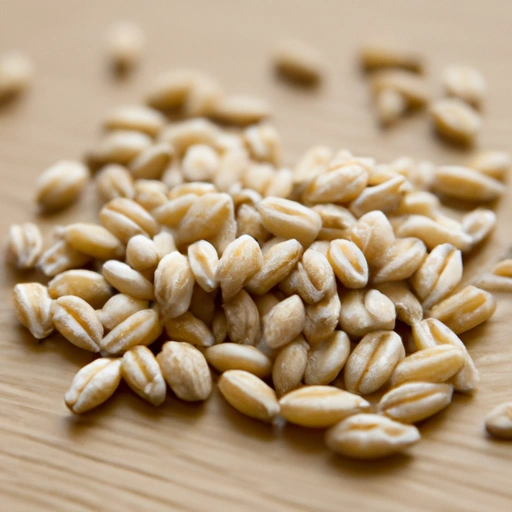Barley
Description

Barley is a cereal grain that belongs to the grass family, a staple food in many cultures. Known for its adaptability to different climates and soil types, barley has been a reliable source of nutrition for thousands of years. It's a versatile ingredient used in soups, stews, bread, and even beverages, providing a nutty flavor and chewy texture. As a whole grain, it's naturally rich in fiber and contains important vitamins and minerals. Barley can be found in various forms, including hulled, pearled, flakes, grits, and flour, making it suitable for a wide range of recipes.
Common uses
Barley is commonly used in a variety of dishes around the world. It's a primary ingredient in the Middle Eastern salad known as tabbouleh and is often found in hearty European soups and stews. In Asian cuisine, barley is sometimes used in sweet desserts or as a rice substitute. Additionally, it's a key ingredient in the production of malt for brewing beer and distilling whiskey.
Nutritional value
Calories
Approximately 354 kcal per 100 grams (3.5 oz / about 1/2 cup).
Protein
Contains about 10 to 12 grams of protein per 100 grams (3.5 oz).
Fat
Low in fat, with around 1 to 2 grams per 100 grams (3.5 oz).
Carbohydrates
High in carbohydrates, providing about 70 to 75 grams per 100 grams (3.5 oz).
Vitamins
Rich in B-vitamins, especially niacin, thiamin, and riboflavin.
Minerals
Provides important minerals such as magnesium, phosphorus, and selenium.
Health benefits
Barley's high fiber content aids in digestion and can help lower cholesterol levels. The beta-glucans found in barley are known to boost heart health. It's also a good source of minerals like selenium, which supports immune function. Regular consumption may help manage blood sugar levels, making it beneficial for diabetic patients.
Potential risks
Barley contains gluten, making it unsuitable for those with celiac disease or gluten sensitivity. Overconsumption can lead to digestive issues such as bloating and gas due to its high fiber content. As with any grain, it should be consumed in moderation within a balanced diet.
Common recipes
Barley is often used in recipes such as barley soup, risotto-style dishes, pilaf, and salads. It's also a common ingredient in homemade bread and granola.
Cooking methods
Barley can be boiled, simmered, baked, or roasted. Pearled barley cooks faster than hulled barley and is often used when a softer texture is desired.
Pairing with other ingredients
Barley pairs well with vegetables like mushrooms, carrots, and onions. It complements herbs such as thyme and parsley, and works well with proteins like beef, lamb, and chicken.
Summary
Barley is a highly nutritious and ancient grain with various culinary uses and significant health benefits. Despite its potential risks for those with gluten intolerance, barley remains a valuable ingredient for its versatility in recipes and its contributions to a healthy diet.